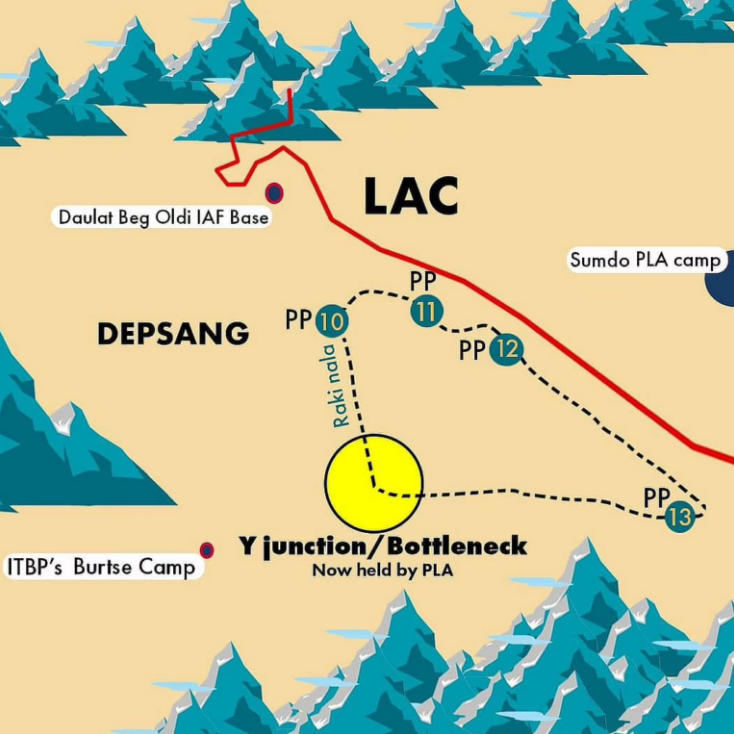Depsang Plains:
-
Depsang is an enclave of flat terrain located in an area the Army classifies as Sub-Sector North (SSN), which provides land access to Central Asia through the Karakoram Pass.
-
It is a few km southeast of the important airstrip of Daulat Beg Oldi (DBO).

Depsang Issue with China:
-
The Chinese army has blocked Indian patrols since 2020 at a place called Y-junction or Bottleneck.
-
A joint patrol of the ITBP and Army takes place at the areas near Y-Junction once a month.
-
The Y-junction is 18 km on the Indian side of the Line of Actual Control, even though the Chinese claim line lies another 5 km further west, to the east of Burtse town.
-
But, Indian Army Chief has delinked Depsang issue with ongoing border issues with China.
Significance of Depsang:
-
Depsang plains are one of the most vulnerable regions for the Indian Army in Ladakh.
-
Sub-Sector North’s (SSN) flat terrain of Depsang, Trig Heights and DBO provides direct access to Aksai Chin.
-
The region is suited for mechanised warfare but is located at the end of one very long and tenuous communication axis for India.
-
China has multiple roads that provide easy access to the area.
-
This leaves SSN highly vulnerable to capture by the PLA, with thousands of km at stake.
-
SSN lies to the east of Siachen, located between the Saltoro ridge on the Pakistani border and the Saser ridge close to the Chinese border.
-
Technically, it is the only place for a physical military collusion between Pakistan and China and poses the challenges of a two-front war.
-
If India loses this area, it will be difficult to launch military operations in the Gilgit-Baltistan region to counter Pakistan.
-
Depsang is also seen as a launchpad for a military offensive by India in Aksai Chin.
Implications of delinking Depsang
-
The danger of delinking Depsang from the current border crisis is of certifying the Chinese argument, which overrules the Indian claim over the territory.
-
In low populated areas like Ladakh, with limited forward deployments, regular patrolling is the only assertion of territorial claims.
-
By arguing that the blockade at Y-junction precedes the current stand-off and that goes back years, the Chinese can affirm that Indian patrols never happened in this area and thus India has no valid claim on the territory.
-
With the disadvantage of being a lesser power compared to China, the argument further weakens India in negotiations.
-
As demonstrated by China post the 1962 War, there should be no holding back in asserting one’s claims when it comes to safeguarding the territory.
Note: Indian Army Chief has said that five friction points with China have been resolved, which are:
-
Galwan
-
Gogra
-
North Bank of Pangong Tso
-
Kailash Range
-
Demchok